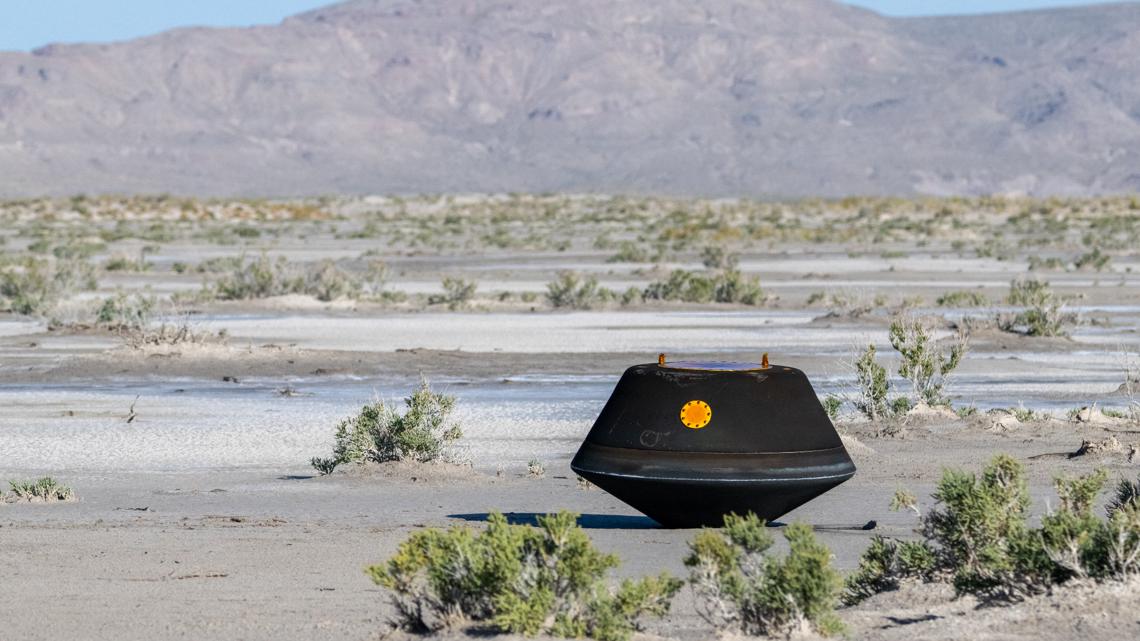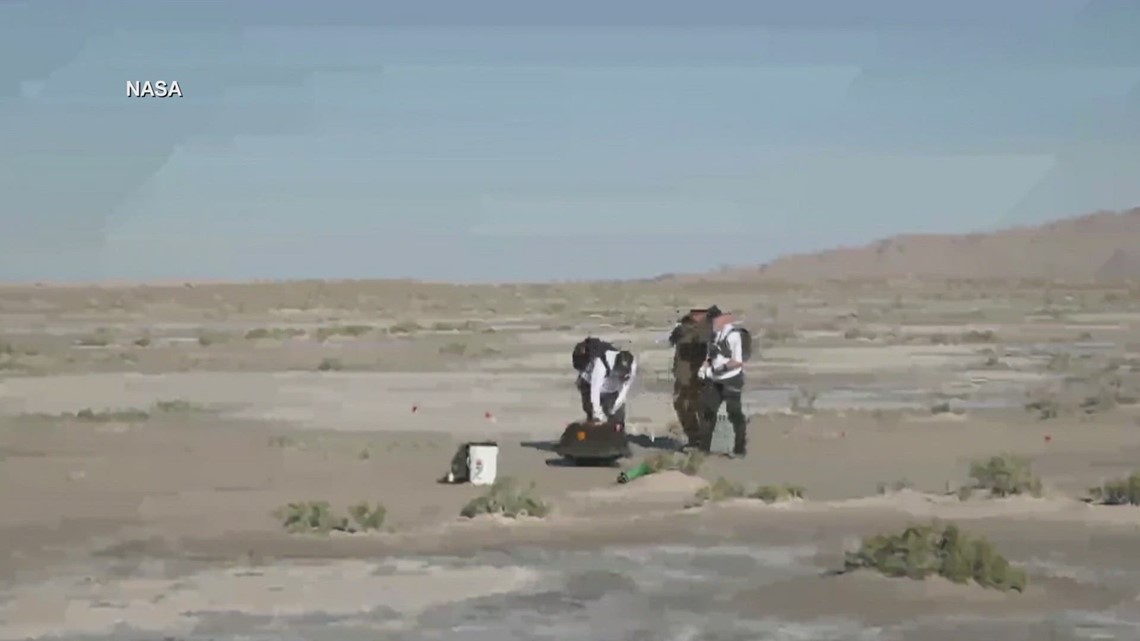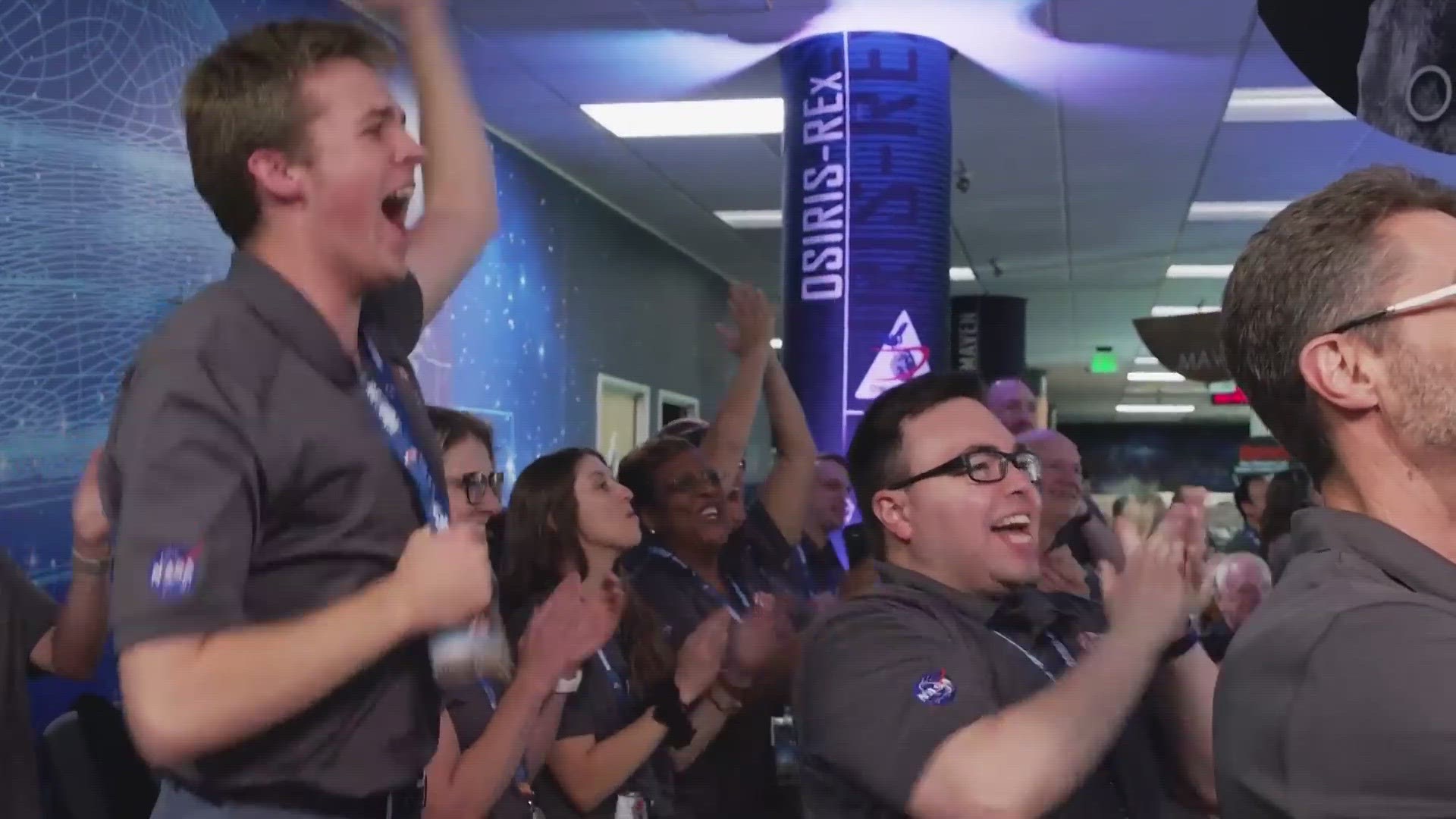LITTLETON, Colo. — Scientists with Lockheed Martin celebrated mission success on Sunday morning from their headquarters in Littleton.
They helped make space engineering history by retrieving a piece of a 4.5-billion-year-old asteroid named Bennu.
About eight ounces of asteroid dust and pebbles were sealed inside a metal capsule that hit the earth’s atmosphere Sunday morning travelling faster than 27,000 mph. The outer shield headed to more than 5,000 degrees as it decelerated at 32 g-force.
It was a punishing descent through the earth’s atmosphere, but a successful landing – a true tribute to its builders. The capsule and the spacecraft, named OSIRIS-REx, that carried it on a six-year, four-billion mile journey were both built in Colorado.
The trip through deep-space and the highly technical landing in the Utah desert at the Department of Defense's Test and Training Range was challenging enough, but the team leaders said the touch-and-go (TAG) on the surface of the asteroid was the most difficult part of the entire mission.


The TAG maneuver was used to collect the asteroid bits in October 2020. OSIRIS-REx fired its thrusters to nudge itself out of orbit around Bennu. It extended the shoulder, then elbow, then wrist of its 11-foot (3.35-meter) sampling arm, known as the Touch-And-Go Sample Acquisition Mechanism (TAGSAM), and transited across Bennu while descending about a half-mile toward the surface.
The instrument briefly contacted the surface and fired off a nitrogen gas bottle, which mobilized a substantial amount of rocky and dusty material from the sample site. About eight ounces of debris got trapped inside the sample acquisition mechanism, and after just 5 or 6 seconds on the surface, OSIRIS was headed back to earth.
About three years later, the spacecraft dropped off the sample capsule which plummeted down to Utah for collection.
Crews from Lockheed Martin have been rehearsing for that moment for months. After landing, the probe was flown by helicopter to a remote clean room and prepared for scientific analysis.
The hope now is that the asteroid bits contain big clues as to the origin of the solar system and perhaps even the origins of life as we know it.
NASA said about 25% of the sample will be analyzed at Johnson Space Center in Houston over the next couple years, but the majority of the asteroid dust will be stored safely away for future analysis. Instruments and methods are expected to improve over time, and new ideas for scientific experimentation may also arise.


OSIRIS continues
The spacecraft will now assume a new name, OSIRIS-Apex and head back out to deep-space to analyze another asteroid named Apophis. That 1,000-foot-wide space rock is expected to make a close encounter within 20,000 miles of Earth in 2029.
Bennu comes to Earth
The asteroid Bennu is considered a Near-Earth Object (NEO), because it makes one orbit around the Sun every 1.2 years and makes a close approach to Earth every six years, although its exact distance from Earth during these approaches varies.
It could even come close enough to hit earth in the year 2182, although scientists give it a less than 1% chance of actually happening that year.
NASA has not said if Bennu's trajectory has anything to do with wanting to study the asteroids composition, but it wouldn't hurt to have that kind of intelligence if the thing actually does make a run at earth someday.
SUGGESTED VIDEOS: Science is Cool
MORE WAYS TO GET 9NEWS
Subscribe to our daily 9NEWSLETTER
Download the 9NEWS APP
iTunes: http://on9news.tv/itunes
Google Play: http://on9news.tv/1lWnC5n
ADD THE 9NEWS+ APP TO YOUR STREAMING DEVICE
ROKU: add the channel from the ROKU store or by searching for KUSA.
For both Apple TV and Fire TV, search for "9news" to find the free app to add to your account. Another option for Fire TV is to have the app delivered directly to your Fire TV through Amazon.

